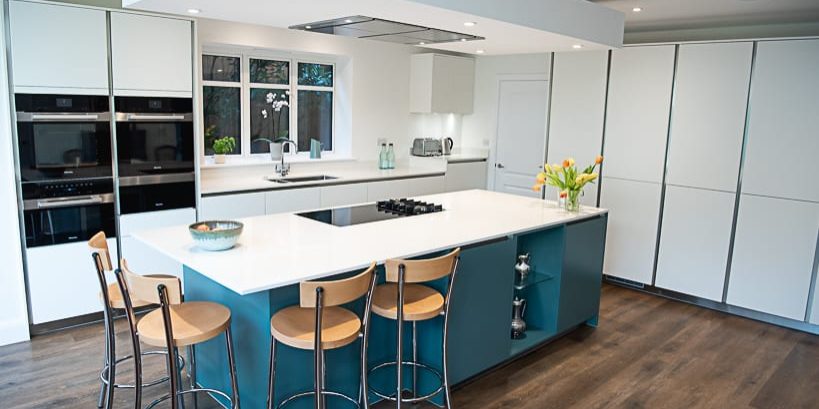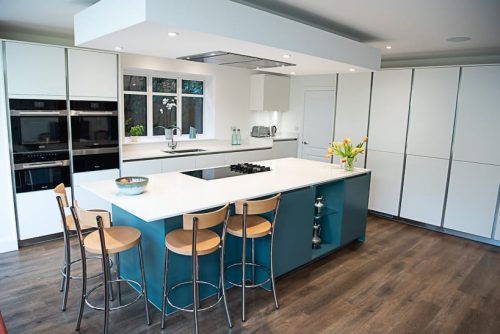
How to Make Your Kitchen Island Your Dining Area
 How to Make Your Kitchen Island Your Dining Area
How to Make Your Kitchen Island Your Dining Area
Our kitchens have earned their place as the heart of our homes. No longer a single closed-off room, used solely for food prep and cooking, but an open plan, family-friendly space used for everything from homework to entertaining. One feature that has helped with this transition is the kitchen island. An island can extend preparation space as well as providing a perfect dining area – and not just for breakfast.
What size kitchen island can you have?
If you plan to use your kitchen island for dining, consider the size of island you can comfortably accommodate in your kitchen. The top of the island will need to overhang to allow for leg room, and this should be a minimum of 20 cm. You also need to factor in sufficient elbow room – think around 75 cm per person.
If you are planning to use your island as a breakfast bar or for casual dining, you are likely to only need stools or low-backed seats which can tuck out of the way.
Be creative with your island
If you have a L-shaped or U-shaped island, your dining space can easily be incorporated into the recess. The island can wrap around to make a booth area with bench seats, or you could have seating along the length of the U and then a free standing table or one that extends from the island.
If you don’t want hard edges and corners formed by a dining section, consider adding a curve to sit around – this will also give a more informal and sociable feeling with everyone facing into the island.
Incorporate different textures
A dining section of your island doesn’t have to be made from the same material as the main part of your island. If it is a different height, you could match the colour or material of your cabinetry or make a statement with something completely different. This will certainly help distinguish dining area from kitchen space.
Extend your island
A good way of including dining space on a kitchen island is to add it to the end. If you haven’t got enough space to have a permanent dining area on the end of your island, you could have an extending island top – a bit like an extendable dining table. Then you only use it when needed. Bear in mind you will need to store the seating somewhere when the extra section isn’t in use.
The advantage to consulting a kitchen designer is that you can discuss all your kitchen needs from the outset. Your island can be made to your exact specifications and will be the perfect addition to your stunning new kitchen. Ruach Designs would love to talk kitchen islands and more with you – take a look at our website for some island inspiration. We are currently offering remote design services as well as online appointments. Look forward to hearing from you soon.
 How to Make Your Kitchen Island Your Dining Area
How to Make Your Kitchen Island Your Dining Area